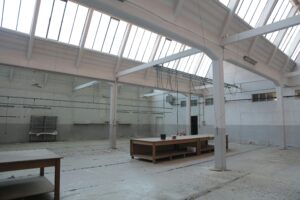
Seasons of Setting: Adapting Concrete Work to Pittsburgh’s Climate
The city has a combined sewer-stormwater system that was state of the art about a century ago. Now it’s old and leaky, overflowing every time it rains with a mixture of raw sewage and stormwater.
Researchers ran thousands of computer simulations to understand how climate change might affect Pittsburgh’s stormwater systems. They suggest tactics that local governments can use, such as requiring new developments to reduce the amount of impervious surface.
Summer
As the concrete industry adapts to climate change, it will need to consider a whole new set of factors. According to a recent study from researchers at Pitt, warmer temperatures will lead to faster deterioration of roads constructed of concrete.
During the summer, concrete tends to heat up faster than air and can significantly impact its strength, especially if it is not properly cured. Using a concrete mix designed for hot weather will help, but utilizing a thermal curing blanket and regularly monitoring concrete temperature can also be beneficial.
Concrete Contractor Pittsburgh PA: It’s also important for a Concrete Contractor in Pittsburgh, PA, to pour concrete as early in the day as possible, as temperatures tend to drop throughout the day. If pouring in the morning isn’t possible, it’s recommended to wait until late afternoon. This will ensure that the concrete is poured at a cooler temperature and prevent it from hydration-related problems. Also, if the concrete must be placed when it is still very warm, chemical additives can be used to help concrete meet its normal strength under these conditions.
Fall
Fall is a season of change, as leaves start to turn color and fall from trees, while the days grow shorter and cooler. Summer sports like association football (in Northern America, East Asia, and South Africa), Canadian football, stock car racing, tennis, golf, cricket, and professional baseball wrap up their seasons in early to late autumn, with the championship World Series of Major League Baseball often referred to as the “Fall Classic.” In addition, winter sports like ice hockey and basketball begin their regular seasons during this time.
In addition to cooling air temperatures through direct shade, trees can cool surface water temperatures through a process called evapotranspiration. This can make concrete pavements less prone to damage by high temperatures, but it’s important for contractors to know how climate changes might affect a specific construction project, and to adjust their work accordingly.
Winter
The winter season can bring frigid conditions. Snow, sleet and ice can cause delays in construction. Building with insulated concrete forms can help minimize the impact of cold weather on conventional concrete work.
While Pittsburgh’s rocky, clay-rich soil may seem more durable than asphalt in the face of heavy traffic and climate change, it can still damage concrete. With its 38 inches of rain and 28 inches of snow per year, the soil can shrink when dry and expand when oversaturated, causing concrete slabs to sink.
As a result, construction teams must prepare for the season’s challenges ahead of time. To mitigate the risks, they must continuously monitor temperatures throughout concrete placement and curing. They should also be prepared to make adjustments as needed to ensure a high-quality finished product. These adjustments include implementing best practices, incorporating cold-weather concrete mixes, and preparing tools and forms for use in varying temperature conditions. Educating the team on these issues helps ensure safe and effective cold-weather concrete construction.
Spring
Spring is a time for enjoying the warm weather and new growth, but it’s also a good time to address concrete issues like addressing post-winter damage, cleaning and sealing, or starting new projects. With a little professional advice, you can ensure that your concrete projects go smoothly this season.
Concrete contractors can have better control over the curing process in spring, resulting in a stronger and more durable finished product. In addition, the mild weather of spring makes surface finishing easier and more precise, resulting in a more defined stamped or colored concrete.
It’s important to seek out estimates for your concrete work in the fall, allowing you to plan ahead and secure a contractor for your project before the demand rises in the spring. By doing this, you can lock in a price for the services you need and avoid any pricing fluctuations.


